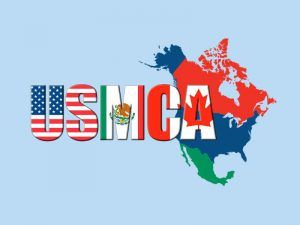
Mexico’s domestic economy and dependence on the United States
Despite attempts to diversify its economic ties and build its domestic economy, Mexico remains heavily dependent on the United States. Above all, that dependence is

Despite attempts to diversify its economic ties and build its domestic economy, Mexico remains heavily dependent on the United States. Above all, that dependence is

México, Canadá e China foram os três principais parceiros comerciais dos Estados Unidos no primeiro trimestre de 2023, considerando apenas mercadorias, não serviços. Os Estados

Mexico, Canada and China were the top three U.S. trading partners in the first quarter of 2023, considering only products, not services. The United States

As exportações automotivas mexicanas cresceram 17,5% no primeiro trimestre de 2023 em comparação com o mesmo período de 2022, informou a Inegi. Assim, essas vendas

Mexican automotive exports grew 17.5% in the first quarter of 2023 compared to the same period of 2022, Inegi reported. Thus, these foreign sales amounted

The United States has in recent years announced or initiated negotiations for new Free Trade Agreements (FTAs) with the European Union, the United Kingdom and

South Korea asked Mexico about a measure related to the transitional imposition on steel imports under the World Trade Organization (WTO). Since 2015, the Mexican

The United States and Canada established a second dispute settlement panel on Canada’s dairy tariff-rate quota policies under the United States-Mexico-Canada Agreement (USMCA). Canada allocates

Canada operates 15 Free Trade Agreements (FTAs) around the world, according to information from the Canadian government, among which the Mexico-United States-Canada Agreement (USMCA) stands

This is a brief summary from the U.S. government on the Agreement between Mexico, the United States and Canada (USMCA or «the Agreement»), which entered

Despite attempts to diversify its economic ties and build its domestic economy, Mexico remains heavily dependent on the United States. Above all, that dependence is

México, Canadá e China foram os três principais parceiros comerciais dos Estados Unidos no primeiro trimestre de 2023, considerando apenas mercadorias, não serviços. Os Estados

Mexico, Canada and China were the top three U.S. trading partners in the first quarter of 2023, considering only products, not services. The United States

As exportações automotivas mexicanas cresceram 17,5% no primeiro trimestre de 2023 em comparação com o mesmo período de 2022, informou a Inegi. Assim, essas vendas

Mexican automotive exports grew 17.5% in the first quarter of 2023 compared to the same period of 2022, Inegi reported. Thus, these foreign sales amounted

The United States has in recent years announced or initiated negotiations for new Free Trade Agreements (FTAs) with the European Union, the United Kingdom and

South Korea asked Mexico about a measure related to the transitional imposition on steel imports under the World Trade Organization (WTO). Since 2015, the Mexican

The United States and Canada established a second dispute settlement panel on Canada’s dairy tariff-rate quota policies under the United States-Mexico-Canada Agreement (USMCA). Canada allocates

Canada operates 15 Free Trade Agreements (FTAs) around the world, according to information from the Canadian government, among which the Mexico-United States-Canada Agreement (USMCA) stands

This is a brief summary from the U.S. government on the Agreement between Mexico, the United States and Canada (USMCA or «the Agreement»), which entered